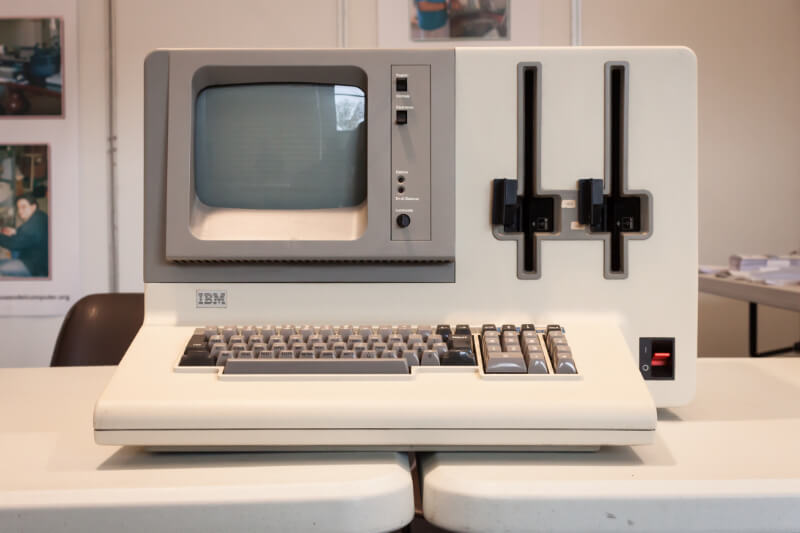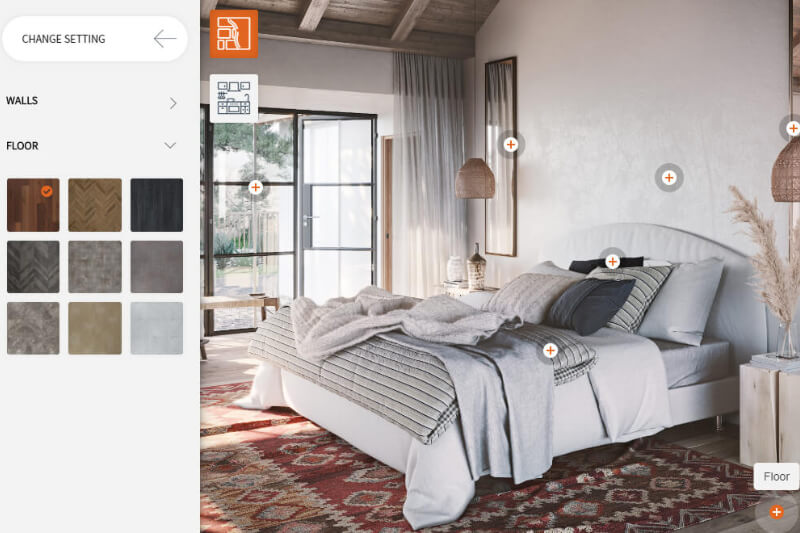The Brief History of eCommerce
How It Has Changed The Furniture Business
To learn how to navigate online retail, furniture manufacturers and sellers have to know the brief history of eCommerce. Indeed, without understanding the past, we can’t build a future. And all e-shopping technologies and practices we use today were invented by other people whose shoulders we stand on.
By analyzing history, we can at least try to predict the future of eCommerce. Using this data, manufacturers and retailers will be able to jump on upcoming trends and develop the tools they might need to get customers interested.
In this article, marketers from our 3D rendering company give a brief introduction to the history of eCommerce and forecasts for its future. Let’s get to it!
Early Years of Ecommerce: 1960-1994

The early years of the brief history of eCommerce have been paved by the development of the Electronic Data Interchange in the 1960s. EDI allowed a digital transfer of data between computers substituting conventional mail and fax. But that was only the beginning. Here is a brief overview of the next 30 years:
1969 — Two electrical engineering students Dr. John R. Goltz and Jeffrey Wilkins start CompuServe, the first-ever US eCommerce company.
1979 — Michael Aldrich invents electronic shopping by creating the very first secure data transmission. He connects transaction-processing computers and television via a telephone line.
1982 — the launch of Boston Computer Exchange, the first eCommerce digital marketplace in history.
1990 — WorldWideWeb, the first Internet browser, debuts.
Ecommerce Platforms and Payment Systems: 1995 – the 2000s

The 1990s were marked by the emergence of eCommerce stores and electronic payment systems. For the first time, in the brief history of eCommerce, people were able to choose goods in e-shops and pay for purchases online using their bank cards. That’s what led to the next game-changing events:
1995 — Jeff Bezos launches Amazon, the first electronic bookstore.
1995 — Pierre Omidyar introduces eBay.
1998 — Confinity Inc. launches the payment system PayPal.
1999 — Alibaba online marketplace debuts.
2004 — Shopify launches.
2005 — Amazon introduces Amazon Prime membership with a free two-day shipping policy. From now on, free shipping and fast delivery are an integral part of modern e-shopping.
2005 — Etsy launches.
2009 — Square payment system debuts. It allows sellers to accept debit and credit payments through an app.
2011 — Google introduces Google Wallet (Google Pay) allowing users to send and receive money transfers from a computer or mobile device.
2014 — Apple launches their digital wallet tool Apple Pay.
With the rise of digital shopping platforms, manufacturers and retailers had to revamp their product visuals and started using CGI for listings and product pages. Years went by, and as 3D imagery was getting more and more photorealistic, it made traditional photography move over.
COVID-19 in the History of Ecommerce: 2020 – Present

Due to COVID-19, thousands of brick-and-mortar stores were closed, but the history of eCommerce doesn’t end here. In fact, the global pandemic pushed online sales even more. According to UNCTAD, COVID-19 boosted online retail sales’ share of total retail sales from 16% to 19%.
Coronavirus made sellers go online but many brands were simply not ready for full digitalization — they neither followed the latest eCommerce trends nor used advanced CGI solutions. Their competitors, on the other hand, placed a premium on top-notch memorable visuals and outshined other sellers on the market.
Today, people continue to shop online using both computers and mobile devices. Moreover, mobile sales are expected to reach 54% by the end of 2021. Modern buyers expect personalization, responsive design, and a customer-focused mobile shopping experience. In brief, mere pictures are not enough anymore.
Brands have to optimize their shopping solutions and visual materials if they want to stay on top of the game. One of the ways to go is to implement AR models into their eCommerce businesses. Augmented reality provides highly-interactive and immersive shopping, which explains its ever-growing popularity.
The Future of Ecommerce

eMarketer predicts that online sales will continue to grow by double digits, and eCommerce sales will reach nearly 24% of total retail sales by 2025. Analysts also foretell an increase in the impact of social media on eCommerce. Its revenue will reach around $46 billion in 2022 — an increase from $37 billion in 2021.
If the brief history of eCommerce has taught us anything, it is that retailers have to be innovative, perseverant, and adaptable to the changes in order to survive the crisis and future-proof their businesses. In a nutshell, they need to improve both marketing and sales tools. Buyers want realism, interactivity, and personalization, and that’s where cutting-edge CGI solutions come at hand.
VR and Animation
With the development of CGI, manufacturers were able to get realistic product videos without physical video shooting. While actual filming was a troublesome and expensive process, CGI didn’t require physical props and a large crew. Therefore, manufacturers and sellers got a chance to save money and time by using 3D product animation instead of conventional videography.
Nowadays, there are 5 most common types of 3D animation. A demo/feature one introduces goods to clients while how-to CG videos explain how a piece works. Story 3D animation tells the brief history of the brand and reveals the manufacturing process. The last type, an assembly 3D video, shows the process of furniture assembling in a fun and self-explanatory way.
Eventually, though, 3D animation might merge with cutting-edge VR technologies to provide a fully immersive VR shopping experience. Even now, using VR headsets and hand controllers, buyers can recreate their rooms in virtual reality and furnish them from top to bottom with VR furniture models. In just a decade or so, we all will be shopping exclusively in VR!
3D Configurator
Never before in the brief history of eCommerce have buyers had the opportunity to customize goods in real-time. Before 3D product configurators, they were limited with the range of designs to choose from. And even if a brand offered personalization, shoppers couldn’t see the ready design before the item was delivered.
Thankfully things have started to change. In the future, buyers will be able to create product designs themselves using advanced CG technologies. Slowly but surely we are getting there with 3D product customizers or, in other words, configurators. A 3D configurator shows a life-like 3D model of a furniture piece on one side and all available textures/colors/fittings on the other. Users can go through all options one by one and choose elements they want for their product design. Once it’s ready, they click the buy button. Easy as pie!
Augmented Reality (AR)

AR technology made a revolution in eCommerce. For the first time in the history of online shopping, buyers got a chance to see how their homes would look like with new furniture before they buy it. Using AR allows shoppers to put AR models into their rooms using an app on their mobile devices. They just point a smartphone or a tablet onto the empty corner and see an AR object added to the space on their screens.
World-leading brands, such as IKEA, were the first ones to jump at the chance of enhancing their eCommerce facilities with AR apps. One by one, other retailers picked up this trend trying to make shopping from home easy and entertaining. Soon, more and more brands will be incorporating AR to stay relevant on the market.
The brief history of eCommerce had its ups and downs — from creating revolutionary internet technology and electronic payment systems to the supply and shipping crisis due to COVID-19. And though Coronavirus severely crippled many businesses, it took eCommerce to a new level marked by the highest sales level in history.
The emergence of strong players in the market set the bar high for other sellers who have to incorporate new technologies in order to stay in the competition. Nowadays, to keep up with the industry and future-proof their businesses, manufacturers and retailers have to offer their customers more interactive and personalized CG solutions, such as AR/VR and 3D configurators.
Can’t wait to try advanced CGI for your website and eCommerce platforms? Click on the link to get 3D rendering services from us, and we’ll provide you with cutting-edge CG tools that will help you win over more customers!




Leave a Reply
Want to join the discussion?Feel free to contribute!